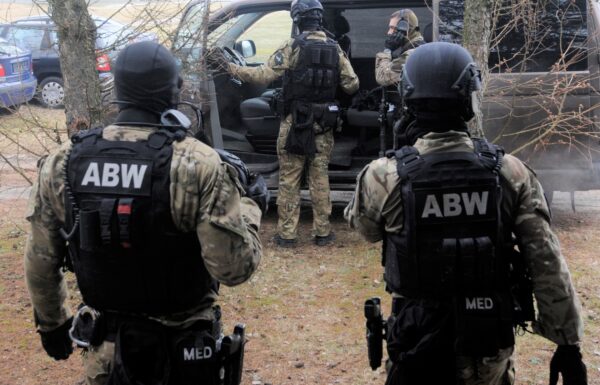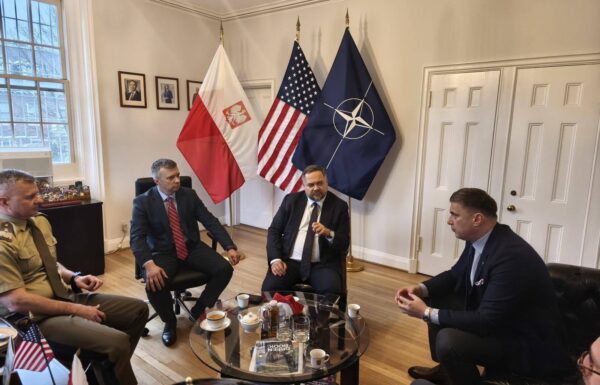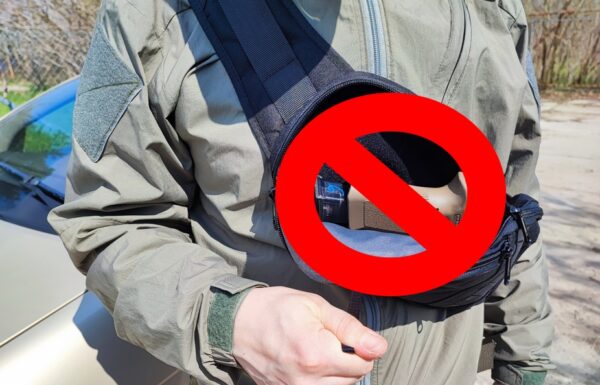As the world of geopolitics constantly changes its nature, the system in which great powers compete on the global stage also evolves. The balance of power, which constitutes the posture of the World, is not given once for all, but rather undergoes consistent modification. The same applies to a wide range of tools, thanks to which nations can and try to protect their core interests.
Today conventional assets of the hard power politics, such as army, navy and air force are no longer self-sufficient, but rather interconnected and rely on a number of factors and high tech solutions, many of which, like GPS, ISR or communications, emerge from our exploration of Space and the use of the opportunities which come along with it. Therefore, Space has become a domain which has a significant impact on how and to what extend many nations will be able to protect their strategic interests and sustain a top position on the political World map. This also requires taking a new approach to how particular players perceive and secure their posture of new powers in Space.
The US Space Command was established in order to integrate various US Government’s Space-related assets, which currently fall under the command of a number of military and civilian institutions, making them less effective to face today’s and future challenges. Creating a one, simple decision making process and a singular chain of command, will allow the US to more effectively protect its strategic interests in Space and at the same time maintain its position of a global power on Earth / Image: US Space Command
Back to the Future…for good
USSPACECOM was formally established as the eleventh Unified Combatant Command on 29th August 2019 at the direction of the President of the United States, Donald J. Trump and Secretary of Defense, Mark T. Esper, during a ceremony at the White House. Gen. John W. Raymond, the former Deputy Chief of Staff for Operations, Headquarters U.S. Air Force, was confirmed as its commander / Picture: The White House
The US Space Command (USSPACECOM) was formally established as the eleventh Unified Combatant Command on 29th August 2019 at the direction of the President of the United States, Donald J. Trump and Secretary of Defense, Mark T. Esper, during a ceremony at the White House. ‘To ensure the protection of America’s interests in space we must apply the necessary focus, energy, and resources to the task – and that is exactly what Space Command will do’, said Secretary Esper.
Gen. John W. Raymond, the former Deputy Chief of Staff for Operations, Headquarters U.S. Air Force, was confirmed as USSPACECOM commander. ‘Gen. Raymond is acutely aware of the vital role that space plays in US national security and our way of life and is an ideal choice to lead this new command. Establishing the United States Space Command as a unified combatant command is the next critical step towards the creation of an independent Space Force as the sixth branch of the armed forces’, Esper added.
Establishment of the USSPACECOM is described as a critical step, which underscores the meaning of Space in the American security strategy and as an important contribution to country’s defence capabilities. The move is expected to accelerate US capabilities to address a range of rapidly evolving threats to country’s space assets and will allow to deter potential adversaries, who might put US interests and assets in Space at risk.
‘The scope, scale and complexity of today’s threat is real and it is concerning’, said Gen. John W. Raymond. The establishment of a combatant command solely focused on the space domain demonstrates the United States’ commitment to protecting and defending its space assets against that threat’ he added.
USSPACECOM’s establishment is a logical consequence of goals set in Donald Trump’s National Security Strategy and the National Strategy for Space, which highlight Space as one of country’s strategic domains and call for the US to maintain its superiority in it. The new Unified Combatant Command is expected to modernize and enhance US approach to space, which in the future will be recognized as a warfighting domain rather than a domain of an unchallenged environment.
The US Air Force describes the main functions and missions of the new Command as to ‘deter aggression and conflict, defend US and allied freedom of action, deliver space combat power for the joint/combined force and develop joint warfighters to advance US and allied interests in, from and through the space domain’.
Furthermore, the USSPACECOM is described as a ‘geographic combatant command with a global area of responsibility defined as the area surrounding the earth at altitudes equal to or greater than 100 kilometers above mean sea level’. The new command will be integrated on a global scale with other geographic combatant commands.
Past lessons, new challenges
Gen. John W. Raymond is Commander, US Space Command and Commander, Air Force Space Command, Peterson Air Force Base, Colorado. He was commissioned through the ROTC program at Clemson University in 1984. He has commanded the 5th Space Surveillance Squadron at RAF Feltwell, England, the 30th Operations Group at Vandenberg AFB, California, the 21st Space Wing at Peterson AFB, Colorado, the 14th Air Force, and Joint Force Space Component Command. He deployed to Southwest Asia as Director of Space Forces in support of operations Enduring Freedom and Iraqi Freedom. The general’s staff assignments include Headquarters AFSPC, USSTRATCOM, the Air Staff and the Office of Secretary of Defense / Picture: USSPACECOM
Although the establishment of the USSPACECOM is being described as a crucial step in the shift of paradigms of US security policy from conventional, Earth-oriented to a more modern one, which is aware of the evolution of new threats and challenges in the Space domain, it is not the first attempt of the US Government to achieve its dominance in new fields of geopolitical rivalry.
The first Space Command was stood up by the US in 1985. It served as a command and control centre for various space assets scattered among the Air Force, Army, and Navy. However, in the aftermath of the 9/11 terrorist attacks and a clear shift in US security priorities, which at that time put more focus on terrorism and the need to provide safety and protection for civilians in the homeland, the decision was taken to merge it with the US Strategic Command, what eventually happened in 2002.
In this regard, the 29th August ceremony at the White House could be described more as a re-activation of the Space Command. However, in reality the new USSPACECOM has very little in common with its predecessor, as the a number of major differences in the security environment can be identified in comparison to the challenges, which the US Armed Forces faced in the space domain in the past.
For instance, in the past 17 years, literally every aspect of military operations launched by the US Armed Forces has grown more dependent on satellite-provided systems, with special regard to various communication, observation and localization assets.
The first step to space domination
The US Air Force describes the main functions and missions of the new Command as to ‘deter aggression and conflict, defend US and allied freedom of action, deliver space combat power for the joint/combined force and develop joint warfighters to advance US and allied interests in, from and through the space domain’ / Picture: USAF
USSPACECOM, as another unified command in the structure of the Department of Defense (DoD), will increase the ability of US Armed Forces to: project power and influence all across the globe (and beyond), speed up decision making processes, as well as to more effectively defend of US interests in Space. The command will be temporarily headquartered at Peterson Air Force Base, Colorado. Additional personnel and functions will be dispatched at Schriever AFB, Colorado, Offutt AFB, Nebraska, and Vandenberg AFB, California. Its final size in terms of manpower, will be defined at the later date and depend on future, projected tasks and requirements. It is expected that it will take at least a year for the Command to reach an Initial Operational Capability status and even longer to achieve the Full Operational Capability.
The mission package set for the USSPACECOM in its initial phase involves four distinct domains:
– strengthening US national deterrence through the provision of space warfighting options that preserve US and allied competitive advantage, promote security and stability;
– leading the protection and defence of combined interests in Space in coordination with allied and joint force commanders and inter-agency partners, if and when deterrence fails;
– preserving and expanding space combat power to enable joint and combined force success;
– improving the development of joint space operations forces and capabilities to enhance space warfighting readiness and lethality while accelerating the integration of space capabilities into other warfighting forces’.
Structured Command
US Space Command will protect US Space-related assets, such as satellites, from a wide range of threats, including terrestrial and space-based, like the Standard Missile-3 Block 1B interceptor shown in the picture, allowing for their identification, characterization and selection of defensive means / Picture: US Navy
According to the US DoD the USSPACECOM is currently composed of two subordinate commands, which role is to support the warfighting efforts of the command: Combined Force Space Component Command (CFSCC) at Vandenberg Air Force Base and Joint Task Force Space Defense (JTF-SD) Schriever Air Force Base.
According to the US Air Force, CFSCC has been tasked to ‘plan, integrate, conduct, and assess global space operations in order to deliver combat relevant space capabilities to Combatant Commanders, Coalition partners, the Joint Force, and the Nation’. The subordinate command is expected to execute and coordinate operations in the space domain through four operation centers: Combined Space Operations Center (CSpOC) at Vandenberg AFB, Missile Warning Center (MWC) at Cheyenne Mountain Air Force Station, Joint Overhead Persistent Infrared Center (JOPC) at Buckley AFB and Joint Navigation Warfare Center (JNWC) located at Kirtland AFB.
CFSCC is entrusted with planning, tasking, directing, monitoring and assessing of the execution of combined and joint space operations on behalf of the Commander of USSPACECOM, directly integrating with ongoing operations in other Combatant Commands. The subordinate command also supports or receives support from partner commands, such as the Australian Space Operations Center (AUSSpOC), the Canadian Space Operations Center (CANSpOC), and United Kingdom Space Operations Center (UKSpOC).
USAF envisions that the Command will also provide ‘Space Domain Awareness (SDA), space electronic warfare, satellite communications, missile warning, nuclear detonation detection, environmental monitoring, military Intelligence, Surveillance and Reconnaissance (ISR), navigation warfare, command and control, and Positioning, Navigation and Timing (PNT)’, which will support the USSPACECOM and the other Combatant Commands.
In today’s World conventional assets of the hard power politics rely on a number of factors and high tech solutions, many of which, like GPS, ISR or communications, are directly or at least partially related to Space. Therefore, the ability of a country to actively and effectively protect its core interests in the space domain will become as essential to securing its prosperity, as it is today in case of its activity on the Earth / Picture: USAF
JTF-SD, the second subordinate command under the USSPACECOM, has a mission to ‘conduct, in unified action with mission partners, space superiority operations to deter aggression, defend capability, and defeat adversaries throughout the continuum of conflict’. It will be responsible for protecting and defending strategic assets in space from a number of threats, such as terrestrial and space-based, identifying them, characterizing and selecting defensive means.
It is envisioned that JTF-SD will execute its missions of protecting and defending space assets, through a handful of operation centers, such as the National Space Defense Center at Schriever AFB, as well as space situational awareness and defense units. ‘All joint task forces, from anti-piracy to space, operate in complex strategic environments’, said Gen. Raymond. ‘That is exactly what the space domain is. Complex. New risks have emerged. But, we have very clear marching orders. This first-of-its-kind operational command will protect and defend US, allied, partner and commercial assets and interests in space’ he added.
Space Force will protect US interests
Establishment of the USSPACECOM alone will be insufficient to fully change the posture of the US as a dominant power in Space. Therefore, it will have to be accompanied by the creation of the Space Force, which will be the sixth branch of the United States military. The plan for its formation was announced by president Trump at a National Space Council meeting on June 18, 2018. ‘I’m hereby directing the Department of Defense and Pentagon to immediately begin the process necessary to establish a space force as the sixth branch of the armed forces’, the President said.
Subsequently, the DoD outlined five actions that should be taken in order to speed up the formation of the Space Force, such as:
– accelerating space technology and development initiatives;
– establishing a Space Development Agency charged with developing and fielding new next-generation capabilities for national security space development;
– establishing a Space Operations Force of professionals, who will form a new community of experts working to lead America’s national security space efforts into the future;
– establishing an operating structure and accountable civilian oversight for Space Force;
– creating a United States Space Command, a unified combatant command, to improve, evolve, and plan space warfighting.
The US government identifies the need to accelerate space technology and development initiatives as well as the importance of fielding new next-generation capabilities for national security space development, as essential to securing the position of the US as the main power in the Space / Picture: USAF
One of the reasons for the creation of the Space Force is the need to reorganize, train and equip various assets in control of the US government, which might allow it to defeat or overcome major space-related threats to its core interests here on Earth. Currently, most of these assets are scattered among a number of military and civilian institutions
Division of Space-related tasks, which are currently assigned to various institutions differing in the way they are organized, controlled and funded, limits the possibility of fulfilling the main missions and goals aligned with the US government’s space policy and ambitions. Furthermore, insufficient staffing among these agencies, hinders the timing and quality of actions, which need to be taken in order to defend US strategic interests in Space and therefore affect the country’s ability to protect its assets on Earth.
At this time it’s yet too early to predict what structure, size and capabilities will the future Space Force possess, as these aspects still require significant conceptual works and discussions among various levels of government institutions, and also the final acceptance of the legislative power. However, it is presumed that the Space Force might generally or at least partially fall under the command and overview of the USAF, playing a similar role in its structure and being comparably interconnected with as the US Marines Corps and the US Navy.





































